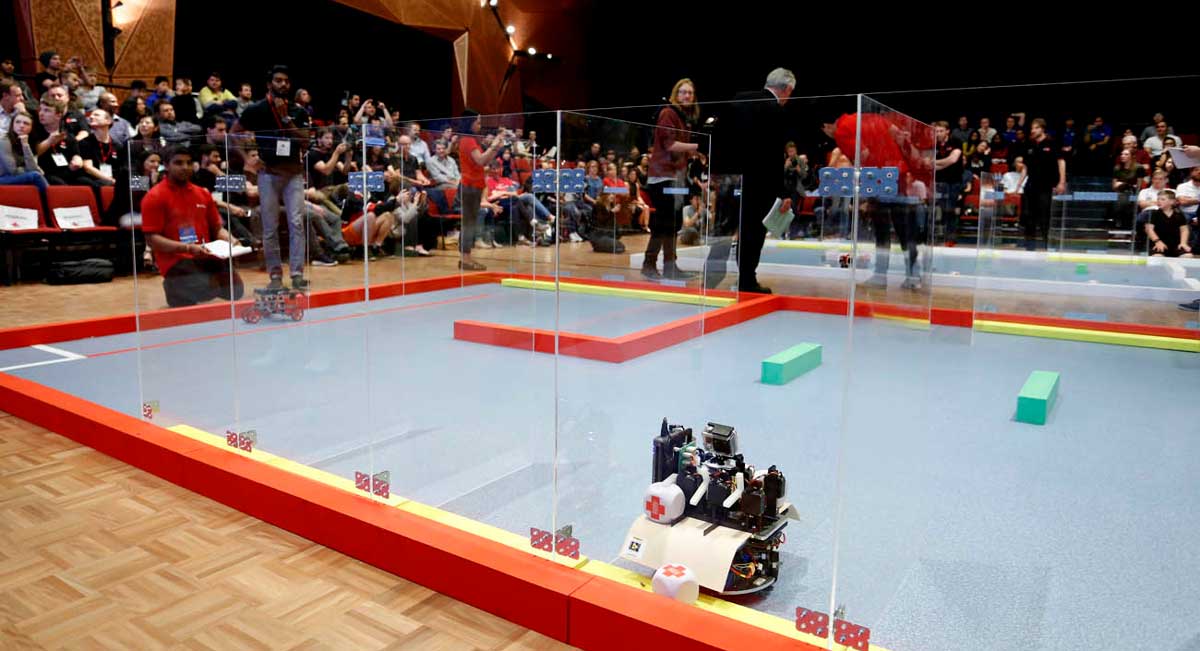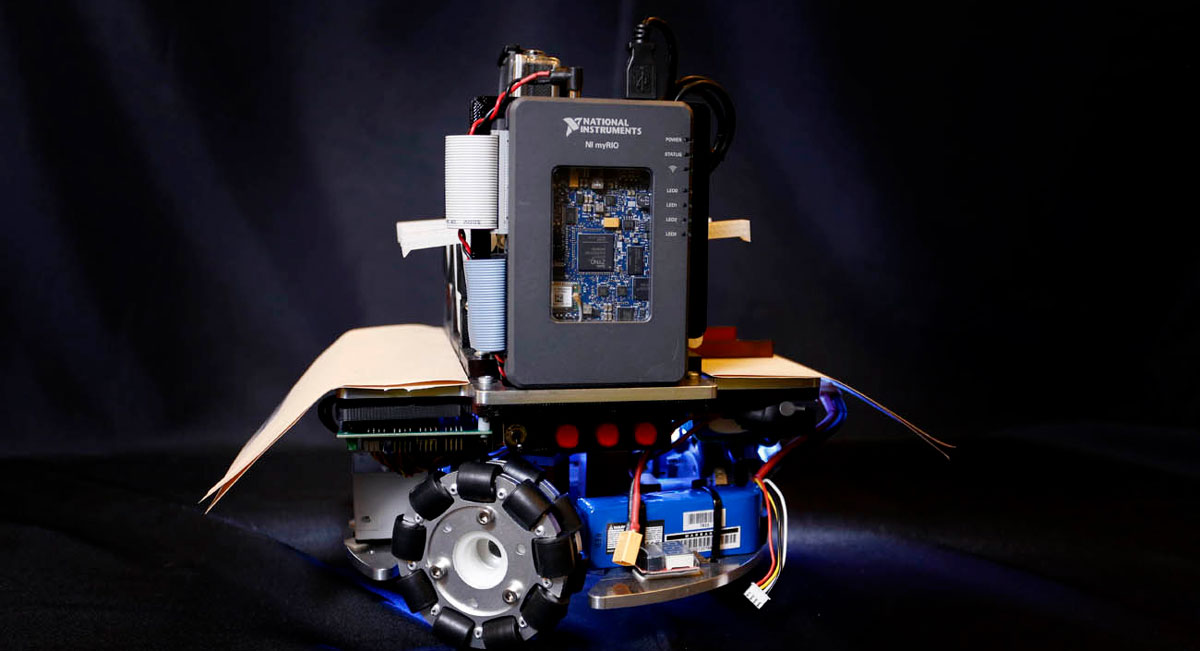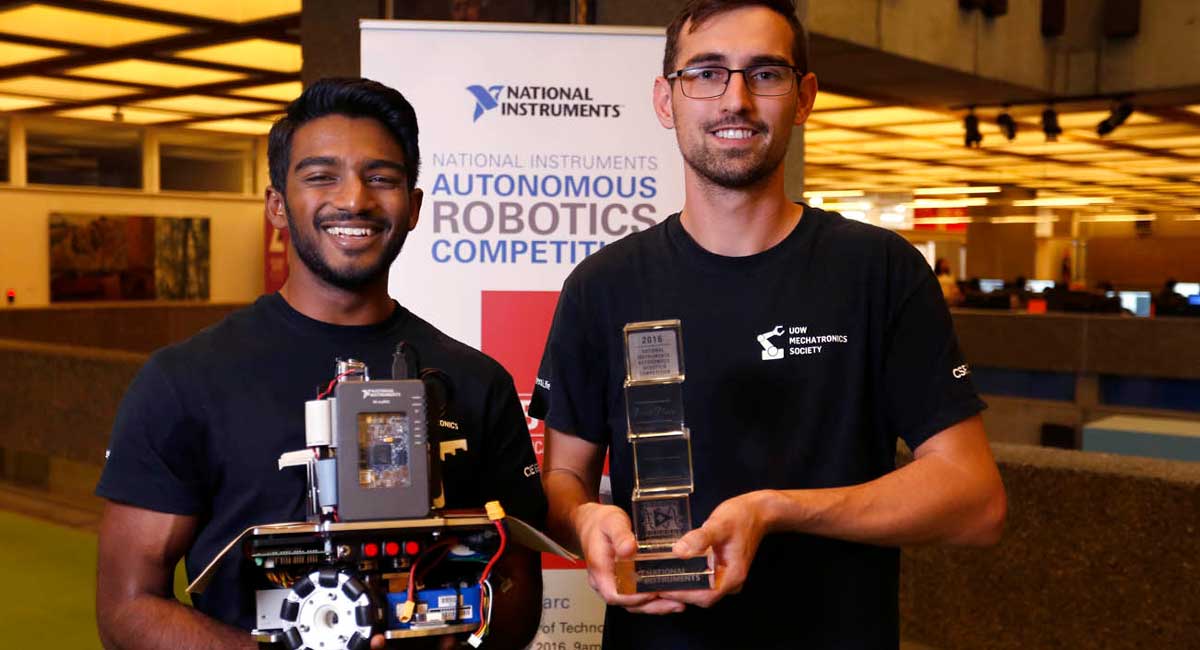September 27, 2016
Student team crowned champions in autonomous robotics competition
UOW engineering students have demonstrated that reliability and a little bit of luck go a long way in getting over the line first.
The UOW Robotics Team beat 25 teams from 19 universities across Australia and New Zealand in the final of the 2016 National Instruments Autonomous Robotics Competition (NI ARC), held recently at the University of Technology, Sydney.
The competition requires teams to design and build an autonomous robot to navigate its way around unknown obstacles to complete a set task.
The UOW team, led by mechatronic engineering students Shannon Wood and Jerome Clinton, built a robust robot that performed nine complete error-free runs on the way to winning the final.
While their robot wasn’t the fastest in the competition, its reliability allowed them to complete the course and, like Steven Bradbury at the 2002 Winter Olympics, steal victory as their competitors crashed out.
“The competition was intense and nerve-racking so we’re incredibly proud of our achievement,” Shannon said. “We didn’t expect to win. Instead of prioritising speed, we focused on a simple and reliable approach that ended up being effective.
“Moving with moderate speed, we were able to distribute the blocks successfully at every stage of the competition without bumping any of the edges.
"Other teams opted for fast moving robots in the hopes of securing more points by completing the track within a shorter time frame. In the later rounds they pushed the speeds a little too high, causing bumps and unsuccessful block placements.
"We attribute our win firstly to finding an optimal balance between speed and stability, and secondly because we didn’t try to squeeze out as much performance as possible in the later rounds. All we had to do was wait for the other teams to make a mistake and it was all over.”

The finals were not without incident – a last minute paper guide proved to be instrumental in the functionality of the robot.
Shannon said he and Jerome entered the competition to continue UOW’s legacy, built on five appearances in the event.
Each year the competition incorporates a new theme. For the 2016 event, the competition’s sixth year, the theme was ‘the hospital of the future’.
The robots were required to navigate a course, complete tasks such as depositing medicine to multiple locations accurately and efficiently while avoiding obstacles, and reach its final destination with precision.
For the past six months each team refined their robots and passed a series of five milestones to make it to the final knockout rounds.

Each team was provided the NI ARC development kit, which includes NI myRIO hardware and NI LabVIEW system design software, featuring the LabVIEW Robotics Module.
“The graphical ‘block style’ programming method makes you think a little differently about program structure, making some tasks much simpler but perhaps inherently presenting some new challenges to beginner programmers,” Shannon said.
“Some of the greatest skills we picked up from the NI ARC is the processing of multiple forms of sensory data to provide accurate localisation of the vehicle within an environment.
"This required a great deal of forward thinking to account situations that may cause a problematic situation.”
Matej Krajnc, Managing Director for National Instruments ANZ/ASEAN, highlighted the importance of practical experience in science, technology, engineering and mathematics education, and the care and research National Instruments invests in designing materials for students and researchers to use.
“It’s so important that students really get hands on experience. We’re continuing to develop new tools to apply mathematical algorithms with real devices.
“We put a lot of effort into really inspiring creativity in students, using competitions to motivate and challenge as they learn and understand the phenomena and processes.”
The UOW team was awarded a prize of $2,500.
Photos courtesy National Instruments.
